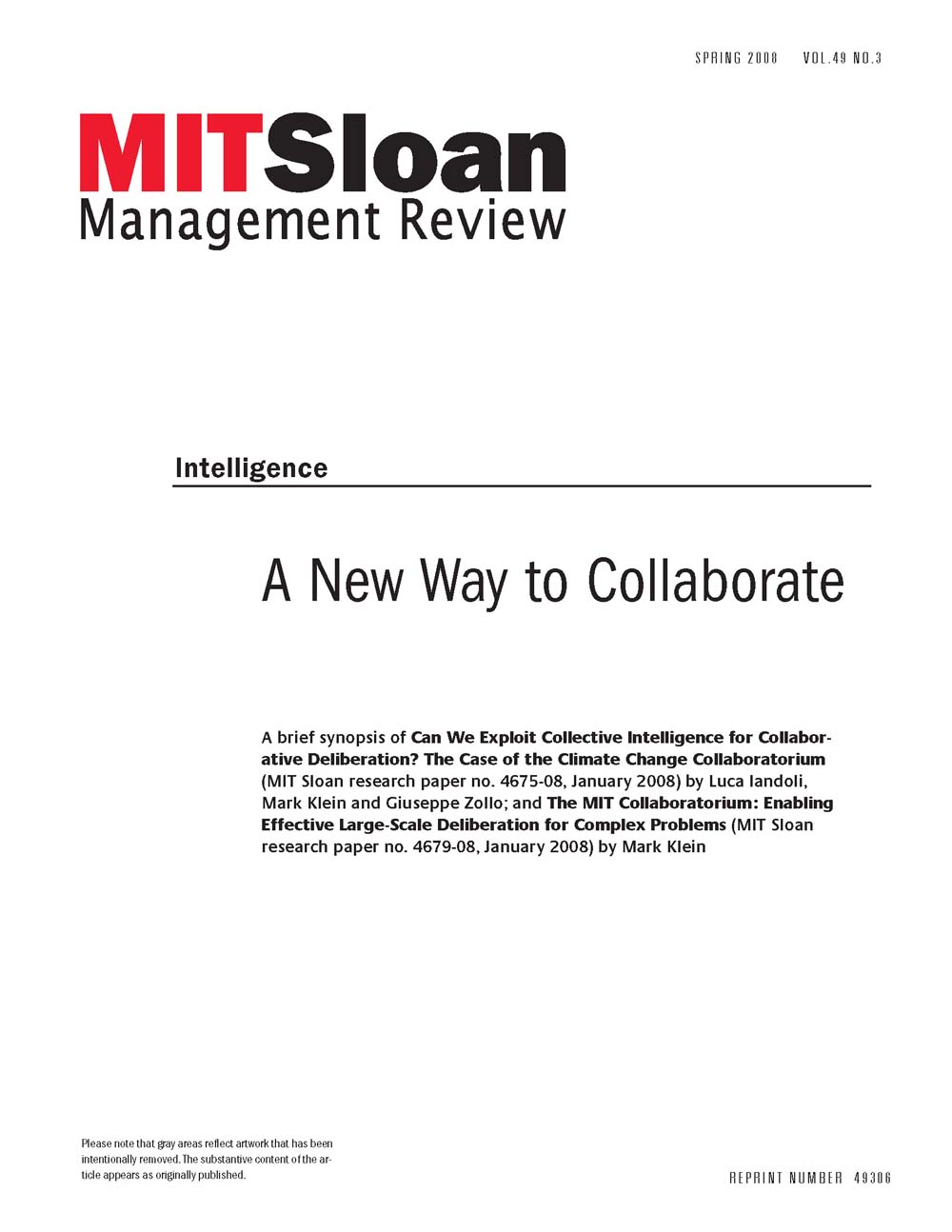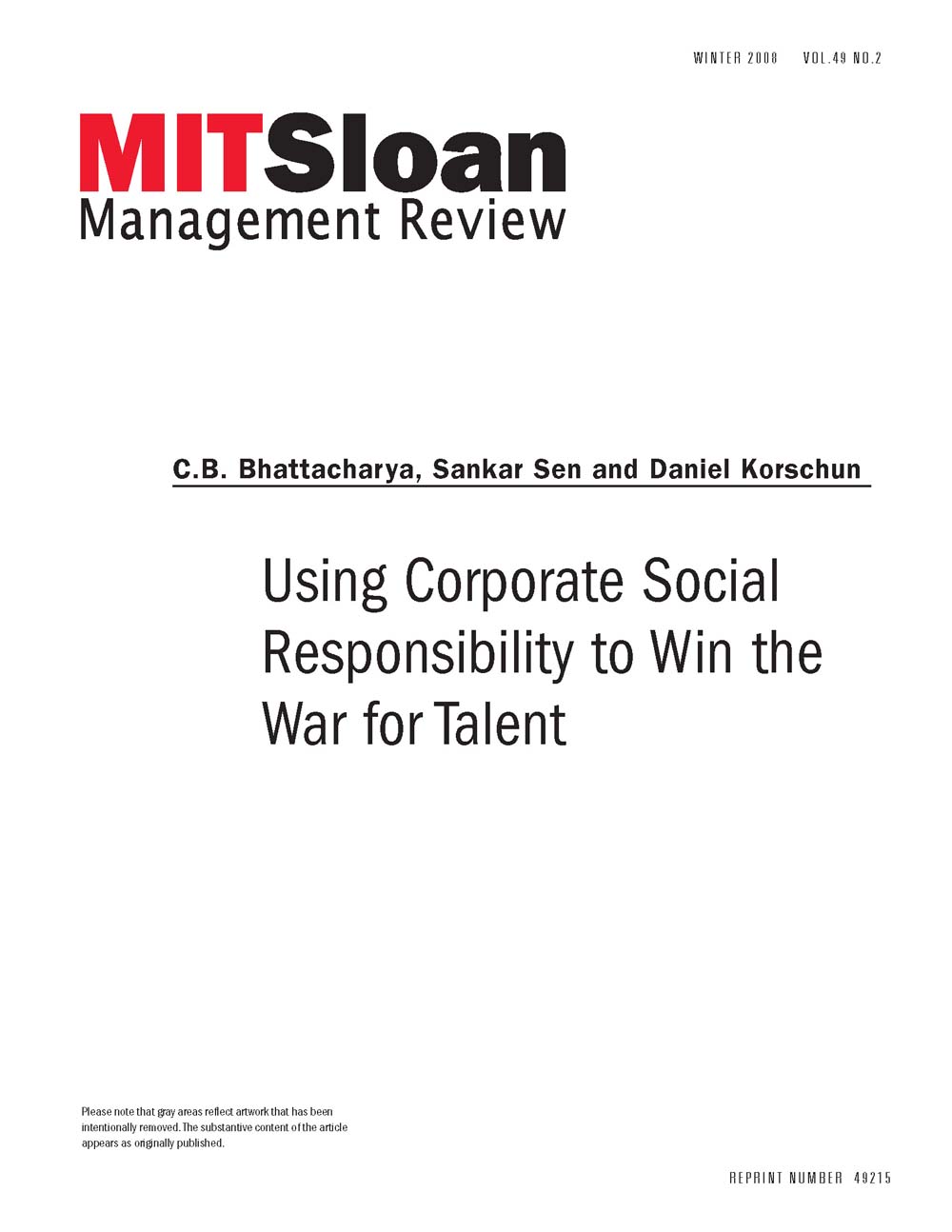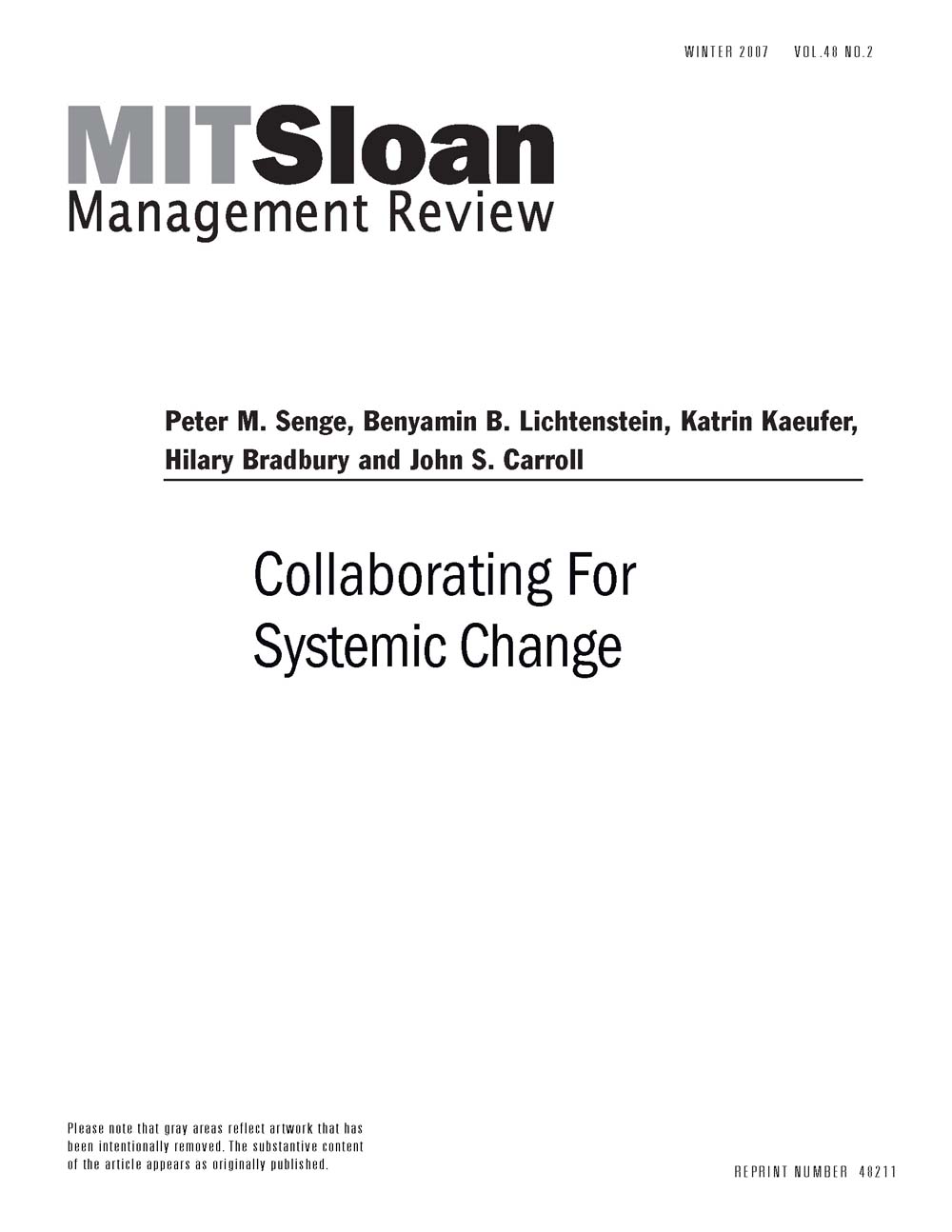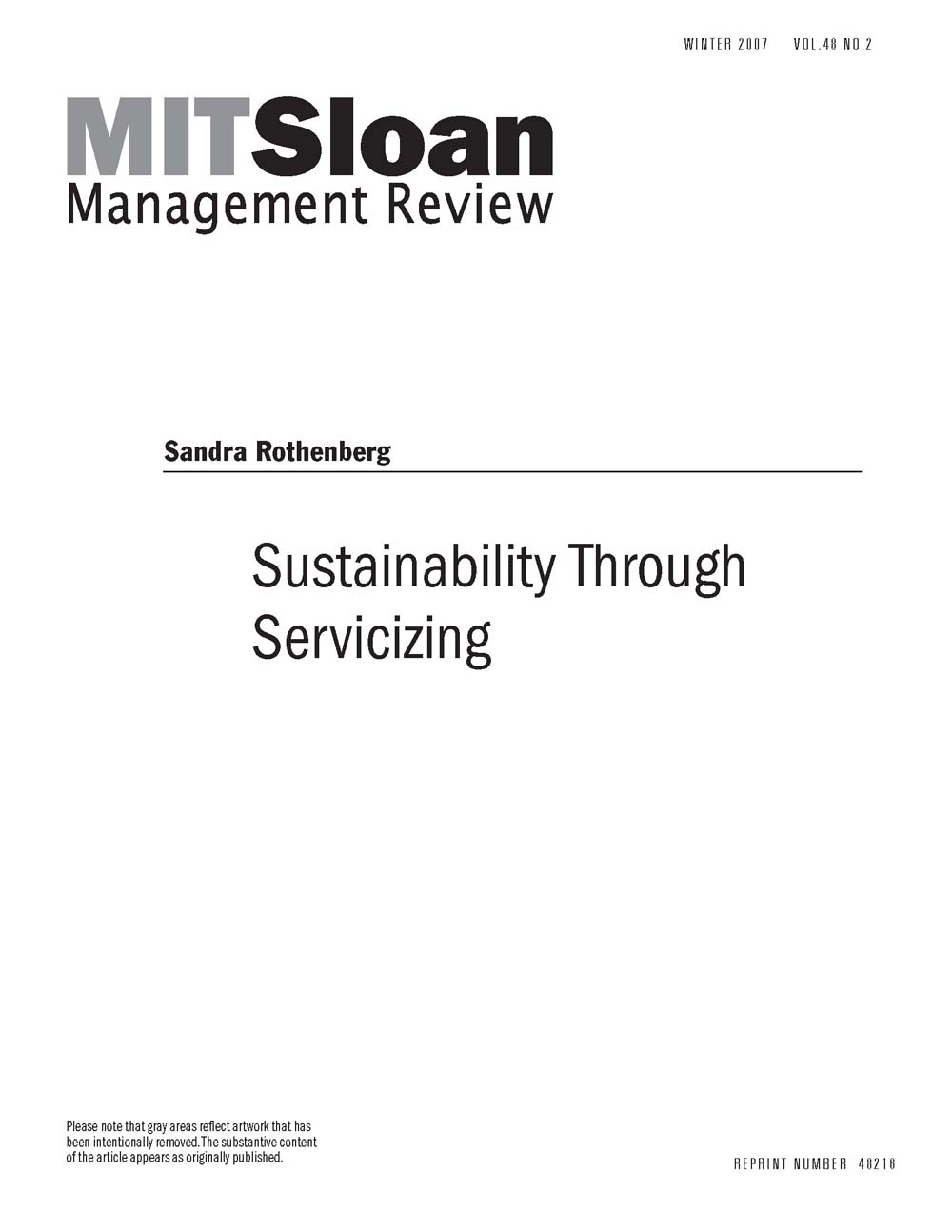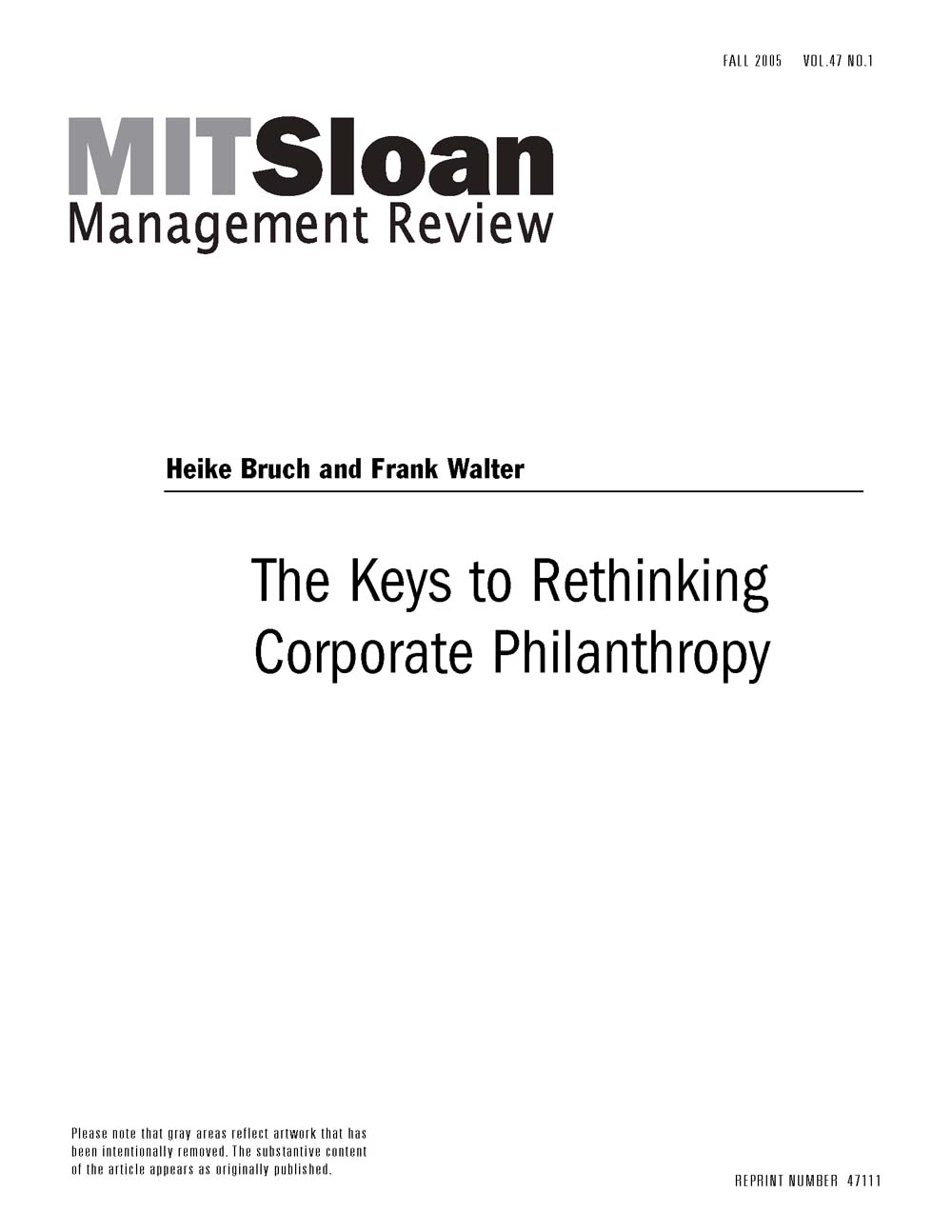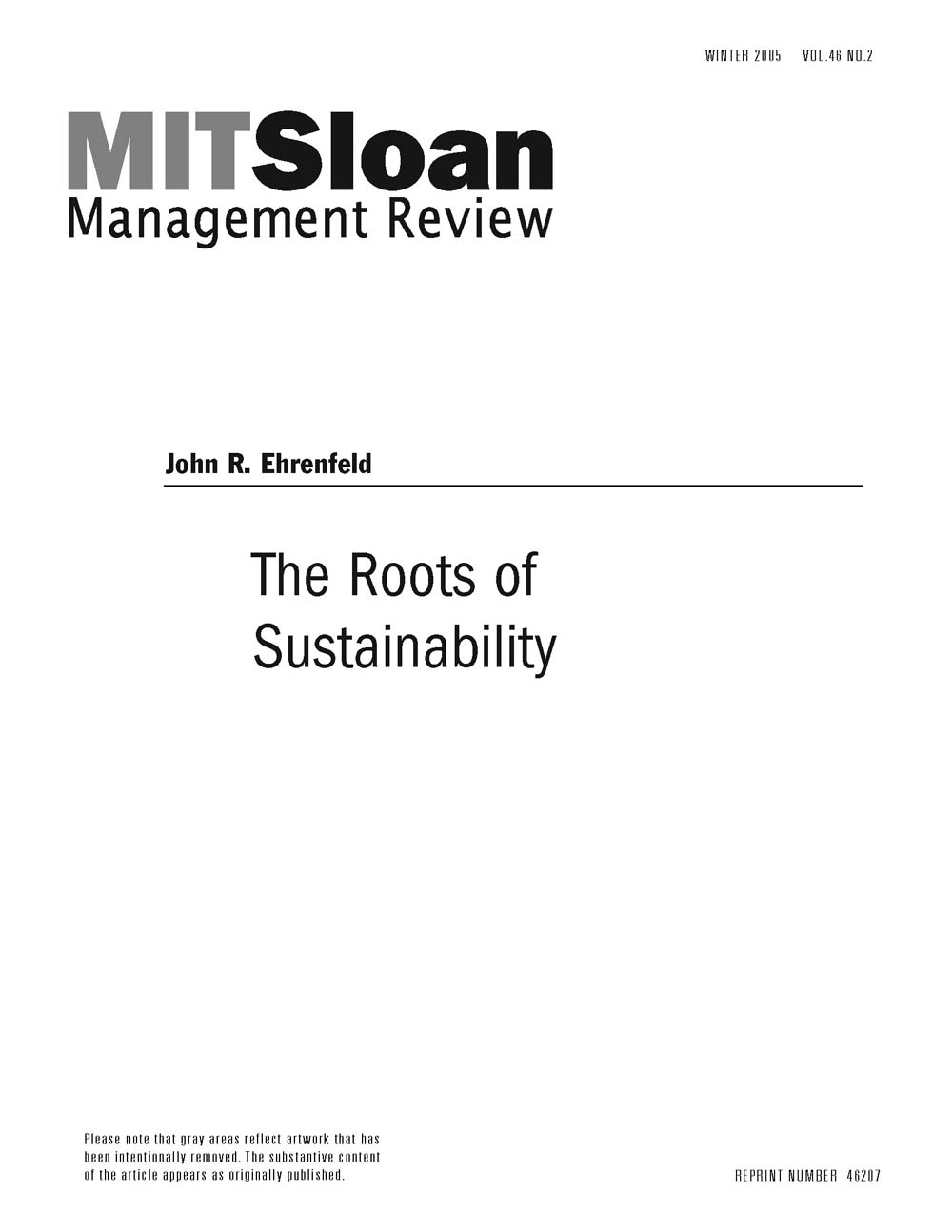Companies with better environmental risk management have a lower cost of capital.
Social Responsibility
Page 13 of 14
-
A New Way to Collaborate
Researchers hope a new Web-based platform will enable better deliberation on complex problems.
-
Using Corporate Social Responsibility to Win the War for Talent
As the war for talent intensifies, there is growing evidence that a company’s corporate social responsibility activities comprise a legitimate and compelling way to attract and retain good employees. To burnish their social responsibility credentials and thereby attract and retain talent, CEOs of companies such as Home Depot, Delta Air Lines and SAP recently pledged to deploy millions of employee volunteers on various community projects. Indeed, many companies big and small, including Cisco Systems, General Electric and IBM, view employee engagement in CSR as a “strategic imperative.” But few organizations have figured out how to use CSR properly as part of their employee engagement efforts. They fall short of communicating their CSR intentions and initiatives to their employees and tend to keep CSR decisions in the hands of senior managers. At the same time, they fail to understand which CSR initiatives work best to excite which groups of employees. All in all, they fail to capture CSR’s considerable potential to help them fight the war for talent. When used properly, CSR can strengthen employees’ engagement by creating the feeling that they are part of a larger corporate mission and that the company shares their values, and by helping them enhance their own social connections. This article draws on recent studies to confirm that CSR can yield substantial returns for both employees and the company. The research demonstrates that CSR initiatives can fulfill employees’ needs and motivate them to identify strongly with their employers, as is very much the case at The Timberland Co. Using frequent verbatims from study participants, the article portrays the challenges that companies face in making the most of their CSR strategies internally. The authors then recommend five practical steps that can help business leaders increase CSR’s effectiveness as a lever for talent management, acquisition, and retention.
-
Collaborating for Systemic Change
Today, as consumer choices on one side of the planet affect living conditions for people on the other side and complex supply chains span the globe, businesses are facing a host of “sustainability” problems & #8212; social and ecological imbalances created by this globalization. Beginning in the late 1990s, organizational members of the Society for Organizational Learning (including Shell, Harley-Davidson, HP, Xerox and Nike, among others) began a variety of initiatives focusing on collaborative solutions to a variety of sustainability issues. The group’s goals have included the application of systems thinking, working with mental models, and fostering personal and shared vision to face these complex sustainability issues. Through its work, SoL (of which two of the authors are founding members) has learned that successful collaborative efforts embrace three interconnected types of work & #8212; conceptual, relational and action-driven & #8212; which together build a healthy “learning ecology” for systemic change. In this article, the authors offer examples from particular projects in which this learning ecology provided an important foundation for substantive progress, and they draw lessons for companies and managers regarding each of the three types of work. Ultimately, the authors conclude that conceptual, relational and action-driven work must be systemically interwoven and that there is little real precedent for that. They offer several guidelines for how it can be accomplished, emphasizing leadership and transactional networks. Finally, they pose three questions that must be answered if systemic solutions are to be successful: (1) How can we get beyond benchmarking to building learning communities? (2) What is the right balance between specifying goals and creating space for reflection and innovation? (3) What is the right balance between private interest and public knowledge?
-
Sustainability Through Servicizing
As companies are increasingly taking on the challenge of global sustainable development, they are forced to rethink the standard business plan based on increasing consumption of products. Drawing from case studies involving Gage Products, PPG Industries Inc. and Xerox Corp., the author shows that some companies are already building their business plans around services and a few key products, and that they are seeing benefits both to the bottom line and in customer retention and acquisition. The author identifies six keys to the new model: building on existing service strengths, redesigning contracts to redefine the basis of profit to create win-win situations when product consumption is reduced and services are improved, communicating the new business plan to current customers, changing sales incentives, acquiring new organizational skills to ensure a better understanding of consumption, and learning to highlight the potential benefits from taking steps to improve the environment.
-
The Keys to Rethinking Corporate Philanthropy
Effective philanthropy must be run as professionally as the core business.
-
The High Impact of Collaborative Social Initiatives
Corporate social responsibility has become a vital part of the business conversation. The issue for most companies is no longer whether to engage in socially responsible activities but how to achieve the maximum benefit from the resources available for social projects while still increasing shareholder value. In this article, the authors draw on years of quantitative and case-based studies of major corporations to conclude that CSR activities work best for society and the corporate participants when they are managed strategically and in collaboration with an array of commercial and noncommercial partners. The authors cite exemplars such as Avon Products, whose name is synonymous with responses to women's healthcare issues, and The Home Depot, whose foundation involves suppliers and government agencies in large-scale efforts to combat housing problems in the United States. The authors point to five core principles behind effective CSR strategies, from the need to contribute "what we do" to the importance of accommodating government's regulatory and taxation influences.
-
The Roots of Sustainability
A business case for sustainability requires more difficult change than most are ready to consider.
-
Choosing the Right Green-Marketing Strategy
Green marketing has not lived up to the hopes and dreams of many managers and activists. Although public opinion polls consistently show that consumers would prefer to choose a green product over one that is less friendly to the environment when all other things are equal, those "other things" are rarely equal in the minds of consumers. For example, when consumers are forced to make trade-offs between product attributes or helping the environment, the environment almost never wins. And hopes for green products also have been hurt by the perception that such products are of lower quality or don't really deliver on their environmental promises. And yet the news isn't all bad, as the growing number of people willing to pay a premium for green products -- from organic foods to energy-efficient appliances -- attests. How, then, should companies handle the dilemmas associated with green marketing? They must always keep in mind that consumers are unlikely to compromise on traditional product attributes, such as convenience, availability, price, quality and performance. It's even more important to realize, however, that there is no single green-marketing strategy that is right for every company. The authors suggest that companies should follow one of four strategies, depending on market and competitive conditions, from the relatively passive and silent "lean green" approach to the more aggressive and visible "extreme green" approach -- with "defensive green" and "shaded green" in between. Managers who understand these strategies and the underlying reasoning behind them will be better prepared to help their companies benefit from an environmentally friendly approach to marketing.




